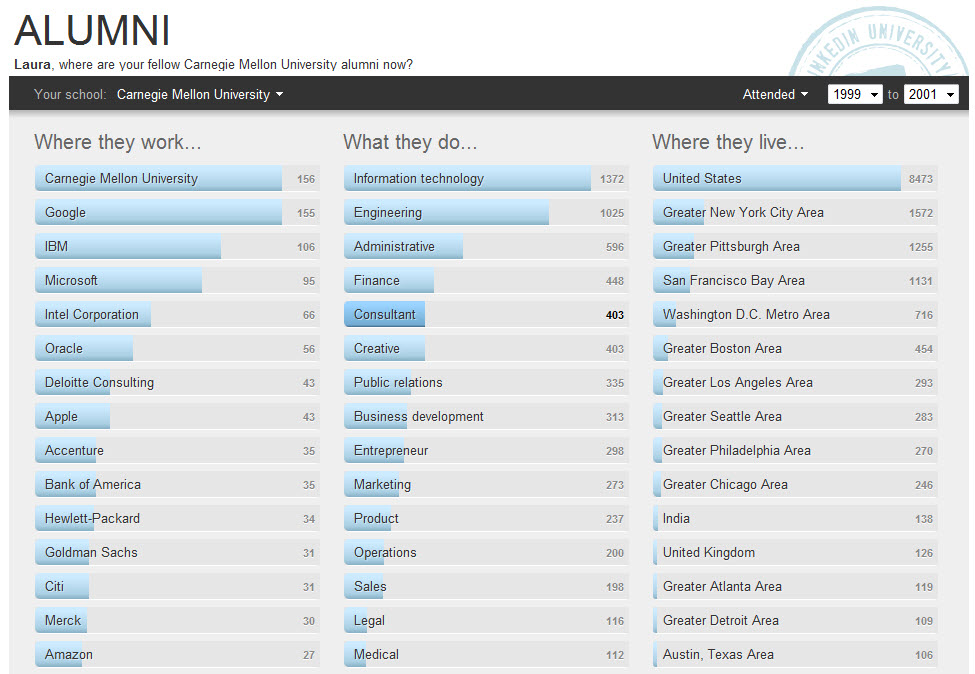Today I got an email from Linkedin that paints an interesting portrait of the graduates from my alma mater, Carnegie Mellon University.
I say “interesting” because my graduating class often wondered why our program, one that championed activities like usability testing, iterative design and design metrics, didn’t seem to use the same advice it dished. Perhaps my class was a bit more skeptical than others in terms of assessing the school’s ROI. You see, our graduation timing was impeccable: it came right in the heart of the fall-out from the dot bomb years. It’s probably understandable why we might have questioned the cost. We’d often ask where did past alumni land and what do they do? How could we strike connections with them? Here we are, years later, and LinkedIn has handily summarized what became of all the graduates (or at least the ones who are on LinkedIn) during that capsule of time…and all of the data is clickable down to names. A few observations: – Who knew that an equal number would end up employed at CMU as at Google?(perhaps this speaks to the dot com fallout and the safety net of academia) – Who knew Pittsburgh could retain so many graduates, even more than the Bay Area could attract? (maybe getting a Trader Joe’s and Whole Foods in the ‘Burgh helped–the food selection was pretty bleak back then). – And perhaps business courses should be made more available for non-MBA students, considering the large number of Consultants and Entrepreneurs out there.
(but really, what school shouldn’t teach its students how to understand financial projections, build a business plan, create a budget?) For a university, it would be fascinating to comb through this data and use it as a way to better structure courses and elicit feedback. Possibly it’s even more fascinating (and useful) for potential students to do their due diligence. For cities with universities, what a way to learn about a possibly influential demographic and how to retain them (Richard Florida, who once lectured about the “Creative Class” at CMU, would likely be all over this). For all I know, LinkedIn plans to license this kind of data. What a pity that CMU–or one of its many entrepreneurs back then–didn’t do this first. It would’ve been classic user-centered design.

